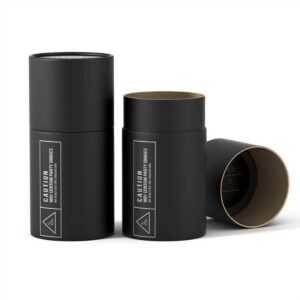These cylindrical structures, made from layers of wound paperboard, serve a wide range of purposes across various industries. From packaging and construction to art and agriculture, paper tubes offer an eco-friendly and practical alternative to plastic and metal counterparts.
The Rise of Paper Tubes in Modern Industry
Paper tubes have been around for decades, but recent innovations have significantly expanded their applications. Their lightweight, durable, and recyclable nature makes them an excellent choice for businesses looking to reduce their carbon footprint while maintaining functionality. The demand for sustainable packaging, in particular, has fueled the rise of paper tubes in both industrial and consumer markets.
Packaging Industry
The packaging industry has embraced paper tubes as a sustainable solution. Many businesses, especially in the cosmetics, food, and retail sectors, use paper tubes to package their products. They provide a sturdy alternative to plastic containers while offering a natural aesthetic that appeals to eco-conscious consumers. Paper tubes also allow for creative branding, as they can be easily printed with designs, logos, and product information.
Additionally, paper tubes enhance product protection. Their cylindrical shape provides excellent resistance to external pressures, making them ideal for shipping delicate or high-value items. This is particularly useful for mailing posters, artwork, and fragile goods.
Construction and Manufacturing
In the construction industry, paper tubes serve a critical function in forming concrete columns. Builders use large, heavy-duty paper tubes as molds, allowing them to create uniform and stable cylindrical structures. Since these tubes are biodegradable and recyclable, they offer a sustainable alternative to plastic or metal molds.
Beyond construction, manufacturers rely on paper tubes for winding materials like textiles, paper, and films. Their smooth, sturdy surface ensures even distribution of materials, preventing tangling or damage.
Agriculture and Gardening
Paper tubes have also found their way into agriculture and gardening. They serve as biodegradable seed planters, allowing gardeners to start seedlings indoors before transplanting them into the soil. Because the paper decomposes naturally, these tubes help minimize root disturbance and reduce waste.
Farmers and large-scale growers also utilize paper tubes for crop protection. By placing tubes around young plants, they shield them from pests and harsh weather conditions while promoting healthy growth.
Creative and Artistic Uses of Paper Tubes
Beyond industrial applications, paper tubes have become a favorite among artists and DIY enthusiasts. Their sturdy yet flexible structure makes them ideal for a variety of creative projects, from home decor to functional furniture.
DIY Crafts and Home Decor
- Crafters use paper tubes to create everything from wall art and desk organizers to lampshades and festive decorations.
- Since they are easy to cut, paint, and manipulate, these tubes allow for endless creative possibilities.
- Many upcycling enthusiasts repurpose paper tubes to make sustainable, handmade gifts and holiday ornaments.
- Teachers and parents incorporate paper tubes into educational activities for children. They make excellent materials for STEM-based projects, such as constructing models of bridges, towers, and even simple machines.
- Children can also turn paper tubes into musical instruments, puppets, and other fun creations that stimulate learning and creativity.
Environmental Benefits of Paper Tubes
As industries worldwide strive to reduce waste and environmental impact, paper tubes stand out as a sustainable choice. Unlike plastic alternatives, which can take centuries to break down, paper tubes decompose naturally. They can also be recycled multiple times, reducing the demand for new raw materials.
Biodegradability and Recycling
- One of the greatest advantages of paper tubes is their biodegradability.
- When discarded in composting facilities, they break down quickly without releasing harmful chemicals into the environment.
- Additionally, many paper tubes are made from recycled materials, further minimizing waste.
- The shift towards paper tubes helps combat plastic pollution. By replacing plastic packaging, storage containers, and household items with paper-based alternatives, businesses and consumers contribute to a cleaner planet.
- This is particularly important in industries like cosmetics and food packaging, where single-use plastic has traditionally been the norm.
Lower Carbon Footprint
Paper tubes require fewer resources to manufacture compared to plastic or metal alternatives. The production process emits fewer greenhouse gases, making them a more sustainable choice. Additionally, their lightweight nature reduces transportation costs and energy consumption, further contributing to an eco-friendly supply chain.
The Future of Paper Tubes
With advancements in material technology and a growing commitment to sustainability, the future of paper tubes looks promising. Companies are continually innovating to enhance the strength, moisture resistance, and versatility of these tubes. As consumers become more environmentally conscious, the demand for sustainable products will continue to drive the expansion of paper tube applications.
From packaging and construction to art and agriculture, paper tubes demonstrate that sustainability and functionality can go hand in hand. By adopting these eco-friendly alternatives, businesses and individuals alike take an important step toward reducing waste and protecting the environment. The next time you come across a paper tube, consider its potential beyond its initial use—whether through recycling, repurposing, or simply making more sustainable choices.







